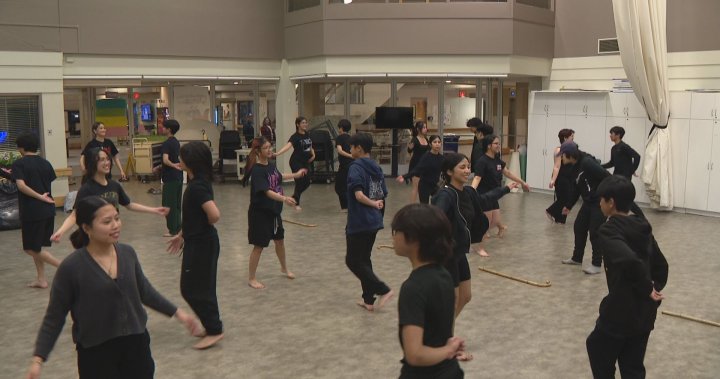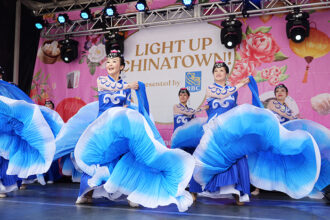In a vibrant church basement on Saskatoon’s west side, the sound of traditional Filipino music echoes off the walls as dancers move in synchronized patterns, their colorful costumes painting the room with flashes of red, yellow, and blue. This is the Kababayang Pilipino Filipino Folk Dance Ensemble, and for over two decades, they’ve been doing far more than just performing—they’ve been preserving an essential piece of cultural identity thousands of miles from its origin.
“When I dance, I feel connected to my ancestors, to the land my parents came from,” explains Irene Herrera, who joined the ensemble five years ago after moving to Saskatoon from Manila. “Even though I’m building my life in Canada, these movements remind me of who I am and where I come from.”
Founded in 1998, the group has evolved into more than just a dance troupe—it’s become a cornerstone of Filipino community life in Saskatchewan. Every Sunday afternoon, members ranging from children as young as six to adults in their sixties gather to practice dances that tell stories of rural Philippine life, historical events, and cultural celebrations that span centuries.
The Philippines boasts over 7,000 islands, each with distinct cultural traditions. This diversity is reflected in the ensemble’s repertoire, which includes the tinikling, where dancers hop between bamboo poles, the Muslim-influenced singkil that tells the story of a princess navigating a forest during an earthquake, and the pandanggo sa ilaw, where performers balance oil lamps while dancing.
“Many children born here have never seen these dances performed in their natural context,” says artistic director Maria Santos. “Through our performances, we’re creating a living bridge between generations and continents.”
What makes their work particularly vital is the reality of cultural erosion in immigrant communities. Second and third-generation Filipino-Canadians often find themselves navigating between cultures, sometimes losing touch with traditions their parents or grandparents took for granted. The ensemble provides not just instruction in dance techniques, but education about the historical and cultural significance behind each movement.
“My daughter couldn’t speak Tagalog when she started dancing with the group,” shares ensemble parent Catherine Reyes. “Now she’s not only learning the language but understanding why these traditions matter. It’s opened up conversations about our family history that might never have happened otherwise.”
Beyond serving the Filipino community, the group has become cultural ambassadors to broader Canadian society. They perform at multicultural festivals, school events, and community celebrations throughout Saskatchewan. Last year alone, they participated in over 30 public performances, introducing thousands to Filipino cultural expressions.
The group has faced challenges, particularly during the pandemic when in-person gatherings were restricted. They pivoted to online practices, creating instructional videos that unexpectedly reached Filipinos across Canada and even internationally. What began as a stopgap measure has evolved into an additional outreach strategy, connecting them with other cultural preservation groups worldwide.
“Technology has allowed us to compare notes with similar ensembles from Toronto to California to Manila,” explains ensemble coordinator Ben Ramos. “We’re part of a global conversation about how to keep traditions alive in diasporic communities.”
Funding remains a perennial challenge. Costume materials, music rights, venue rentals, and travel expenses add up quickly. The group operates primarily through member contributions, community donations, and occasional arts grants. Despite financial constraints, they’re committed to keeping participation affordable, ensuring that cost doesn’t become a barrier to cultural connection.
As Canada continues to evolve as a multicultural society, groups like the Kababayang Pilipino Filipino Folk Dance Ensemble demonstrate how cultural preservation strengthens rather than weakens national identity. They exemplify how immigrants can fully participate in Canadian society while maintaining meaningful connections to their heritage.
“These aren’t museum pieces we’re preserving,” Santos emphasizes. “Culture is living, breathing, and adapting. Some of our choreography incorporates contemporary elements while respecting traditional forms. That’s how traditions stay relevant—they grow without losing their essence.”
As Saskatoon’s cultural landscape continues to diversify, the ensemble’s work takes on even greater significance. They’re not just teaching dance steps; they’re demonstrating how cultural identity can be simultaneously preserved and shared, creating a more textured and understanding community for everyone.
For those watching the dancers practice their intricate footwork on a Sunday afternoon, one thing becomes abundantly clear: heritage isn’t just something to be remembered—it’s something to be lived, celebrated, and passed forward. And sometimes, the most profound cultural preservation happens not in museums or textbooks, but in church basements, community centers, and school gymnasiums where people gather to keep traditions in motion.
For more explorations of cultural preservation efforts across Canada, visit CO24 Culture or read our analysis of evolving community traditions at CO24 Trends.

























